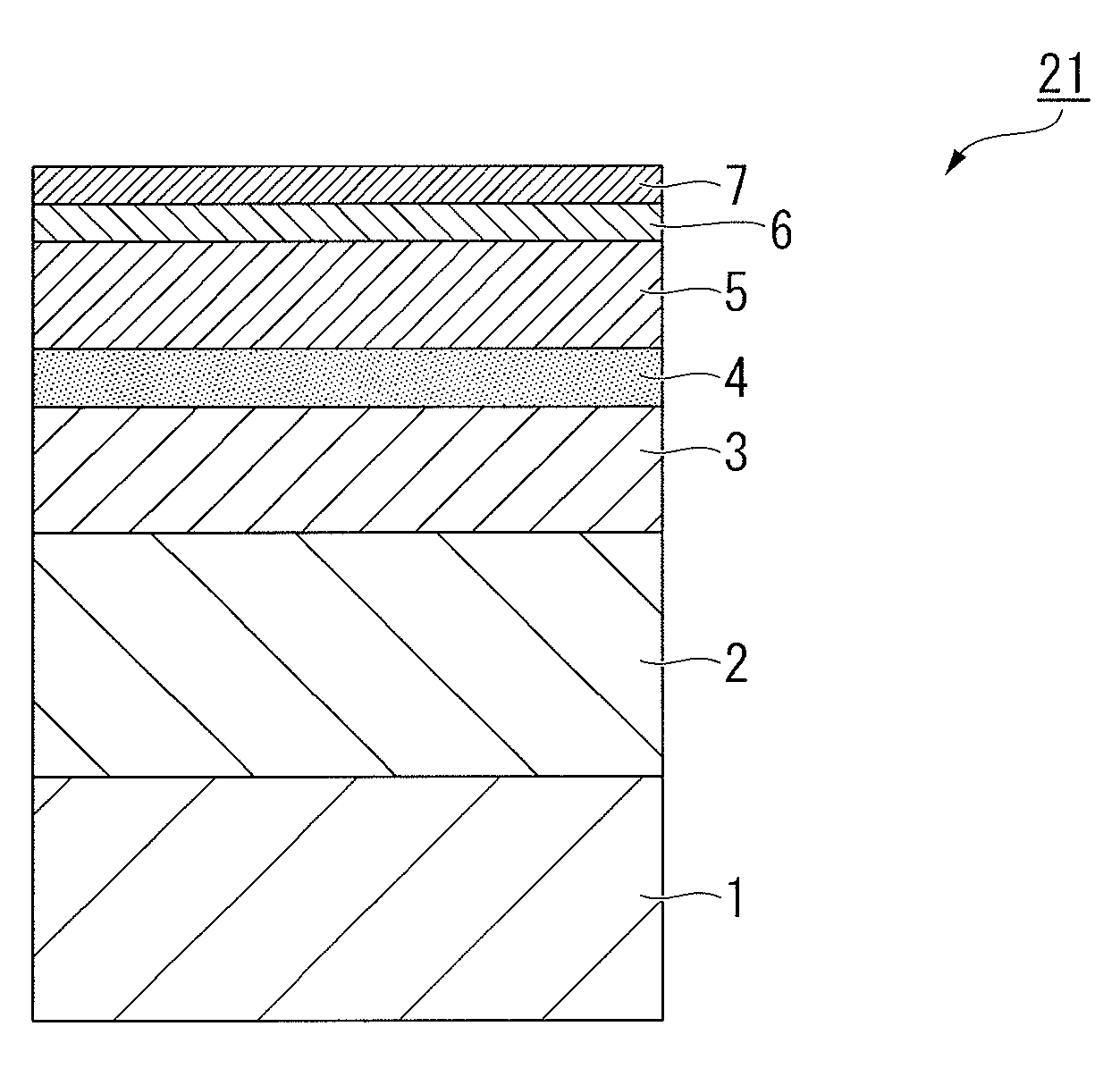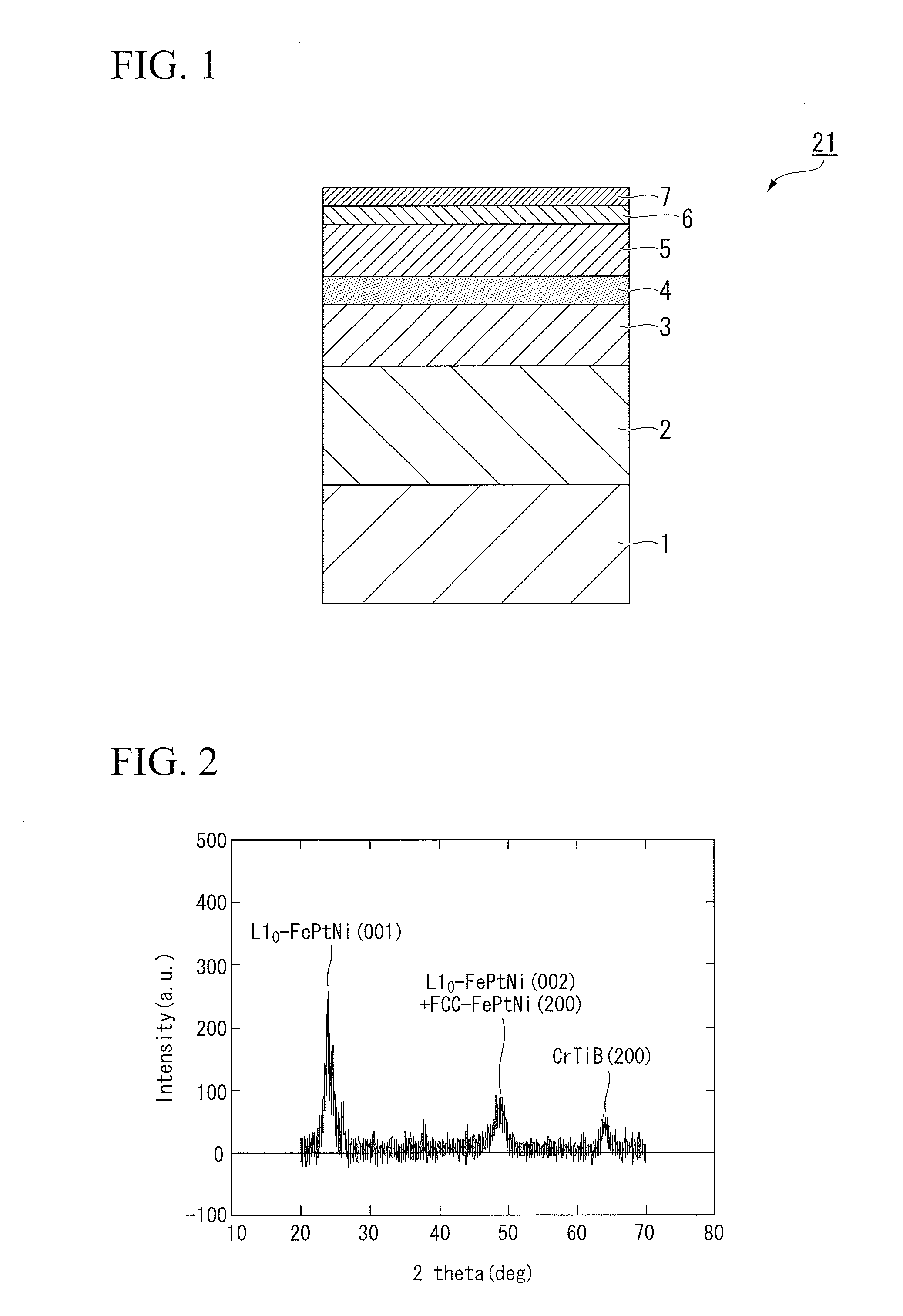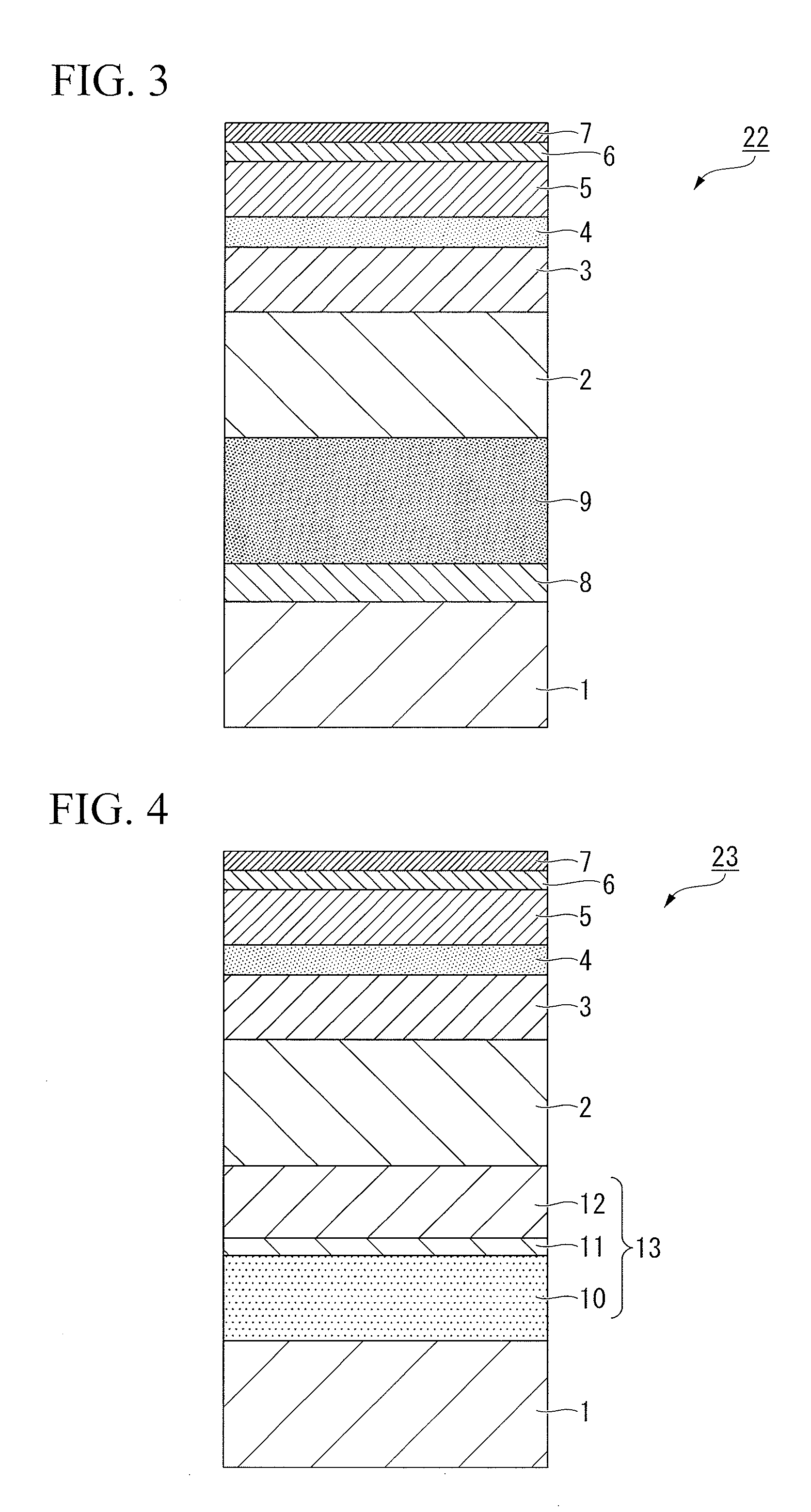Heat-assisted magnetic recording medium and magnetic storage device
a technology of which is applied in the field of heat-assisted magnetic recording medium and magnetic storage device, can solve the problems of inability to meet the requirements of writing, deterioration of thermal stability, and tendency to deteriorate the thermal stability of grains, so as to reduce the exchange coupling and reduce the size of the magnetic cluster
- Summary
- Abstract
- Description
- Claims
- Application Information
AI Technical Summary
Benefits of technology
Problems solved by technology
Method used
Image
Examples
examples 1-1 to 1-10
, and Comparative Example 1
[0051]FIG. 1 illustrates one example of the layer structure of a magnetic recording medium prepared in these examples of the present invention.
[0052]A 100 nm Cr-50 at % Ti underlayer (first underlayer) 2 was formed on a glass substrate (the substrate) 1, and following heating to 380° C. using a lamp heater, a Cr alloy underlayer (second underlayer) 3 of 12 nm was formed. Subsequently, a 2 nm MgO underlayer (third underlayer) 4, a 12 nm 92 mol % (Fe-50 at % Pt-15 at % Ni)-8 mol % (SiO2) magnetic layer 5, and a 3 nm carbon protective film 6 were formed in a continuous manner within a vacuum deposition apparatus. Following removal from the vacuum apparatus, a lubricant film 7 of 1.7 nm was applied to each magnetic recording medium prior to evaluation of the recording and reproduction characteristics.
[0053]In the above production process, by altering the material used for the Cr alloy underlayer (second underlayer) 3 as shown in Table 1, magnetic recording med...
examples 2-1 to 2-16
, and Comparative Example 2
[0066]FIG. 3 illustrates one example of the layer structure of a magnetic recording medium prepared in these examples of the present invention.
[0067]A 10 nm MgO underlayer 8 and a 200 nm Ag heat sink layer 9 were formed on a glass substrate (the substrate) 1, and a seed layer (first underlayer) 2 of 20 nm was then formed. Subsequently, the substrate 1 was heated to 420° C., and an 8 nm Cr-20 at % Mo-10 at % B underlayer (second underlayer) 3, a 5 nm MgO underlayer (third underlayer) 4, a 10 nm 90 mol % (Fe-45at % Pt)-10 mol % (TiO2) magnetic layer 5, and a carbon protective film 6 were formed. A lubricant film 7 of 1.7 nm was applied to each magnetic recording medium prior to evaluation of the recording and reproduction characteristics.
[0068]In the above production process, by altering the material used for the seed layer (first underlayer) 2 as shown in Table 2, magnetic recording media of Examples 2-1 to 2-16 were produced.
[0069]Further, a magnetic recor...
examples 3-1 to 3-12
, and Comparative Example 3
[0078]FIG. 4 illustrates one example of the layer structure of a magnetic recording medium prepared in these examples of the present invention.
[0079]A soft magnetic underlayer (SUL) 13 having a total thickness of 50 nm and composed of a Ru layer 11 sandwiched between two layers 10 and 12 of an Fe-30 at % Co-3 at % Ta-1 at % Si-1 at % B alloy was formed on top of an amorphous substrate (the substrate) 1. Subsequently, a 20 nm amorphous seed layer (first underlayer) 2 was formed, and following heating of the substrate to 350° C., a 10 nm Cr alloy underlayer (second underlayer) 3 was formed. Following formation of the Cr alloy underlayer 3, a 5 nm MgO underlayer (third underlayer) 4 and a 6 nm Fe-30 at % Pt-10 at % Ni-30 at % C magnetic layer 5 were formed. Following formation of the magnetic layer 5, a 3 nm carbon protective film 6 was formed, and a lubricant film 7 was applied.
[0080]In the above production process, by altering the materials used for the see...
PUM
 Login to View More
Login to View More Abstract
Description
Claims
Application Information
 Login to View More
Login to View More - R&D
- Intellectual Property
- Life Sciences
- Materials
- Tech Scout
- Unparalleled Data Quality
- Higher Quality Content
- 60% Fewer Hallucinations
Browse by: Latest US Patents, China's latest patents, Technical Efficacy Thesaurus, Application Domain, Technology Topic, Popular Technical Reports.
© 2025 PatSnap. All rights reserved.Legal|Privacy policy|Modern Slavery Act Transparency Statement|Sitemap|About US| Contact US: help@patsnap.com



